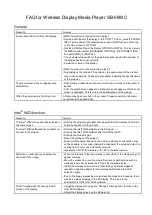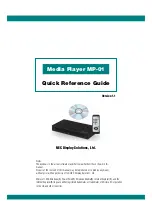
NI PXIe-5601 Calibration Procedure
|
© National Instruments
|
5
•
Allow a warm-up time of at least 30 minutes after NI-RFSA is loaded and recognizes the
NI 5601. The warm-up time ensures that the measurement circuitry of the NI 5601 is at a
stable operating temperature.
•
Ensure that the PXI/PXI Express chassis fan speed is set to HIGH, that the fan filters, if
present, are clean, and that the empty slots contain filler panels. For more information about
chassis fans, refer to the
Maintain Forced-Air Cooling Note to Users
document available
at
ni.com/manuals
.
•
(Optional) Clean the chassis fan filters at least every six months. Some chassis include fan
filters. Depending on the amount of chassis use and the ambient dust levels, filters might
require more frequent cleaning. If regular maintenance of dirty or clogged filters is not
possible, you can remove the filters to maintain adequate cooling.
•
Use an SMA torque wrench (5 lb · in., Agilent 8710-1582 or equivalent) to tighten any
connection with an SMA connector.
•
Use a 3.5 mm torque wrench (8 lb · in., Agilent 8710-1765 or equivalent) to tighten 3.5 mm
or 2.92 mm (K) connections without an SMA connector.
•
All procedures assume an NI PXI/PXIe-5652 as the LO source for the NI 5601.
•
Lock all test equipment to the same reference frequency. Refer to the
NI 5663/5663E
Timing Configurations
topic in the
NI RF Vector Signal Analyzers Help
.
Caution
The connectors on the device under test (DUT) and test equipment are
fragile. Perform the instructions in this procedure with great care to prevent
damaging any DUTs or test equipment.
Calibration Procedures
The calibration process includes the following steps:
1.
—Install the device and configure it in Measurement & Automation Explorer
(MAX).
2.
—Characterize the response of the test system. You use the
measured response during the verification procedures.
3.
—Measure the operation of the NI 5601 to confirm whether the device is
operating within its published specifications.
If the NI 5601 fails any of the verification procedures, complete the following steps:
Note
Complete the verification for all NI 5601 specifications where as-found data
is required before performing any module calibrations.
1.
Adjustment—Perform an adjustment on the NI 5601. Refer to the
section in
this document.
2.
Reverification—Repeat the verification procedure for the NI 5601 to ensure that it is
operating within the device specifications after adjustment.





































